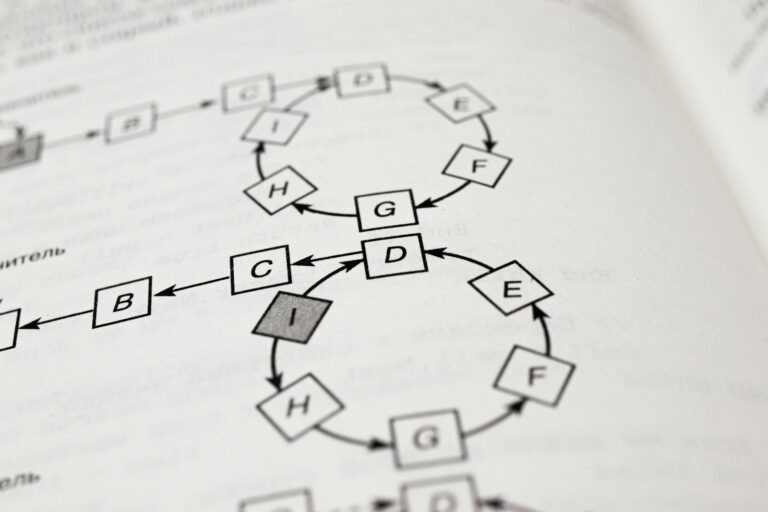A binary tree is a fundamental hierarchical data structure in computer science and plays a critical role in many advanced algorithms and real-world applications. In the context of B.Tech Data Structures Notes 2025, it is considered a core component of Unit 2 Notes Data Structures and forms an essential part of the engineering study material for both B.Tech and BCA programs. A binary tree is defined as a tree data structure in which each node has at most two children, referred to as the left child and the right child. These structures are instrumental in optimizing search operations, implementing compilers, databases, and various data processing systems.
Definition and Terminology
A binary tree consists of nodes arranged in a hierarchical structure. The topmost node is called the root. Each node contains three components: the data, a pointer to the left child, and a pointer to the right child. If a node has no children, it is called a leaf node.
Important Terminologies:
- Root Node: The first node in the tree.
- Child Node: Nodes that descend from another node.
- Parent Node: A node that has children.
- Leaf Node: A node with no children.
- Subtree: Any node and its descendants form a subtree.
- Level: The depth of a node in the tree.
- Height: The length of the longest path from a node to a leaf.
- Depth: The number of edges from the root to the node.
Types of Binary Trees
Binary trees come in several types, each with unique characteristics and use-cases:
- Full Binary Tree: Every node has either 0 or 2 children.
- Complete Binary Tree: All levels are completely filled except possibly the last level, and nodes are as far left as possible.
- Perfect Binary Tree: All internal nodes have two children and all leaves are at the same level.
- Balanced Binary Tree: The difference in height between the left and right subtrees is at most one for all nodes.
- Degenerate (or Pathological) Tree: Each parent node has only one child.
Representation of Binary Trees
Binary trees can be represented in memory in two main ways:
- Linked Representation: Each node is represented as an object or structure containing data and pointers to left and right children.
struct Node {
int data;
struct Node* left;
struct Node* right;
};- Array Representation: Primarily used in complete binary trees. The root is stored at index 0, the left child at
2*i+1, and the right child at2*i+2.
Traversal Techniques
Tree traversal refers to the process of visiting each node in the tree exactly once in a specific order. There are three major types of depth-first traversal and one breadth-first traversal:
- Inorder Traversal (Left, Root, Right): Used in BSTs for sorted output.
- Preorder Traversal (Root, Left, Right): Useful for copying trees.
- Postorder Traversal (Left, Right, Root): Used for deleting trees.
- Level Order Traversal: Visits nodes level by level from top to bottom.
// Example: Inorder Traversal
void inorder(struct Node* root) {
if (root != NULL) {
inorder(root->left);
printf("%d ", root->data);
inorder(root->right);
}
}📌 Insert Diagram: Binary Tree with labeled nodes (Root, Left Child, Right Child)
Insertion in Binary Tree
Insertion depends on the type of binary tree. In general binary trees, insertion can be level-order based to maintain completeness. In binary search trees, values less than the root go left, greater go right.
struct Node* insert(struct Node* node, int data) {
if (node == NULL) {
return createNode(data);
}
if (data < node->data) {
node->left = insert(node->left, data);
} else {
node->right = insert(node->right, data);
}
return node;
}Deletion in Binary Tree
Deletion is slightly complex and involves three scenarios:
- Node with no child: Simply delete it.
- Node with one child: Replace the node with its child.
- Node with two children: Replace with inorder successor (or predecessor).
Binary Search Tree (BST)
A Binary Search Tree (BST) is a binary tree with the property that the left child contains only nodes with values less than the parent node, and the right child contains only nodes with values greater than the parent node. This makes operations like insertion, deletion, and search highly efficient (average-case time complexity of O(log n)).
📌 Insert Diagram: Binary Search Tree with sample data
Applications of Binary Trees
- Used in expression parsing and evaluation
- Efficient searching and sorting (in BSTs)
- Implementation of heaps for priority queues
- Routing algorithms in networks
- Databases and file systems
- Syntax trees in compilers
AVL Trees and Balancing
An AVL Tree is a self-balancing binary search tree where the difference between the heights of left and right subtrees cannot be more than one for all nodes. AVL trees use rotations to maintain balance during insertion and deletion.
Rotations:
- Left Rotation
- Right Rotation
- Left-Right Rotation
- Right-Left Rotation
📌 Insert Diagram: AVL Tree showing left and right rotations
Threaded Binary Trees
A threaded binary tree is a binary tree variant that facilitates traversal without a stack or recursion. In this tree, null pointers are replaced by pointers to the inorder predecessor or successor, which reduces overhead.
Binary Heap
A binary heap is a complete binary tree used to implement priority queues. It can be of two types:
- Min Heap: Parent is smaller than children.
- Max Heap: Parent is larger than children.
Time and Space Complexity
| Operation | Average Case | Worst Case |
|---|---|---|
| Search | O(log n) | O(n) |
| Insert | O(log n) | O(n) |
| Delete | O(log n) | O(n) |
🔹 Short Answer Questions (2-3 Marks)
- Define a binary tree. A binary tree is a data structure in which each node has at most two children, referred to as the left and right child.
- What is an inorder traversal? Inorder traversal visits the left subtree, the root, and then the right subtree.
- List types of binary trees. Full binary tree, complete binary tree, perfect binary tree, balanced binary tree, degenerate tree.
- What is a BST? A Binary Search Tree maintains ordered data such that left child < root < right child.
- Explain a leaf node. A leaf node is a node with no children.
- What is a threaded binary tree? A threaded binary tree replaces null pointers with pointers to inorder predecessor or successor.
- What is the use of AVL trees? AVL trees are used to maintain balanced binary search trees for efficient search times.
🔸 Long Answer Questions (5-10 Marks)
- Explain the different types of binary trees with diagrams. Binary trees include full, complete, perfect, balanced, and degenerate trees. Each has structural differences impacting performance and use-cases. Diagrams help visualize how children are distributed.
- Describe inorder, preorder, and postorder traversal with examples. These are depth-first traversal methods. Inorder: Left → Root → Right; Preorder: Root → Left → Right; Postorder: Left → Right → Root. For example, for a tree with root 10 and children 5 and 15, inorder traversal yields 5, 10, 15.
- Write and explain the insertion operation in a BST. In BST insertion, if data < node, go left; else go right. Recursively reach null and insert node. This maintains BST properties.
- Differentiate between AVL and Binary Search Trees. BSTs don’t guarantee balance; AVL Trees enforce balance using rotations, ensuring logarithmic operations.
- Explain binary heaps and their application. Binary heaps are complete trees supporting quick access to min or max element, used in heapsort and priority queues.
📝 Chapter Summary
Binary tree is a hierarchical data structure where each node has up to two childrenBinary trees can be full, complete, perfect, balanced, or degenerateTraversal methods include inorder, preorder, postorder, and level orderBinary Search Tree is a binary tree with sorted ordering of elementsInsertion and deletion in BST maintain ordering using recursion and conditionsAVL trees are balanced BSTs that use rotations to maintain balanceThreaded trees help in traversal without stack or recursionBinary heaps support priority queue operations with efficient min/max retrieval
📘 Model Paper / Sample Internal Exam Questions
- Explain the structure and applications of binary search trees in detail.
- Describe different tree traversal techniques and write their algorithms.
- Compare AVL Trees with Binary Search Trees. Highlight the advantages of self-balancing.
- Write a program to insert a node in a BST and perform inorder traversal.
- What are binary heaps? How do they differ from normal binary trees?



